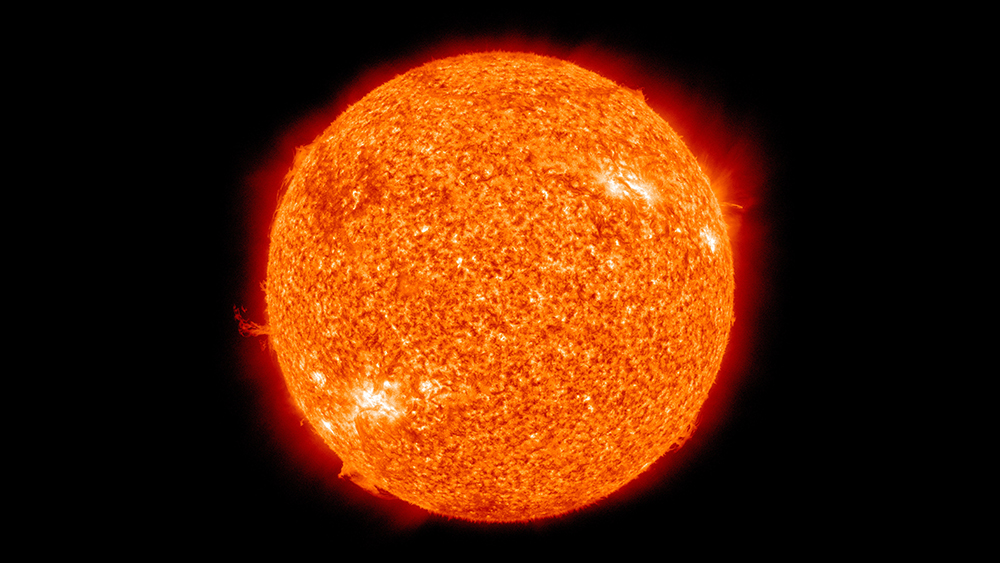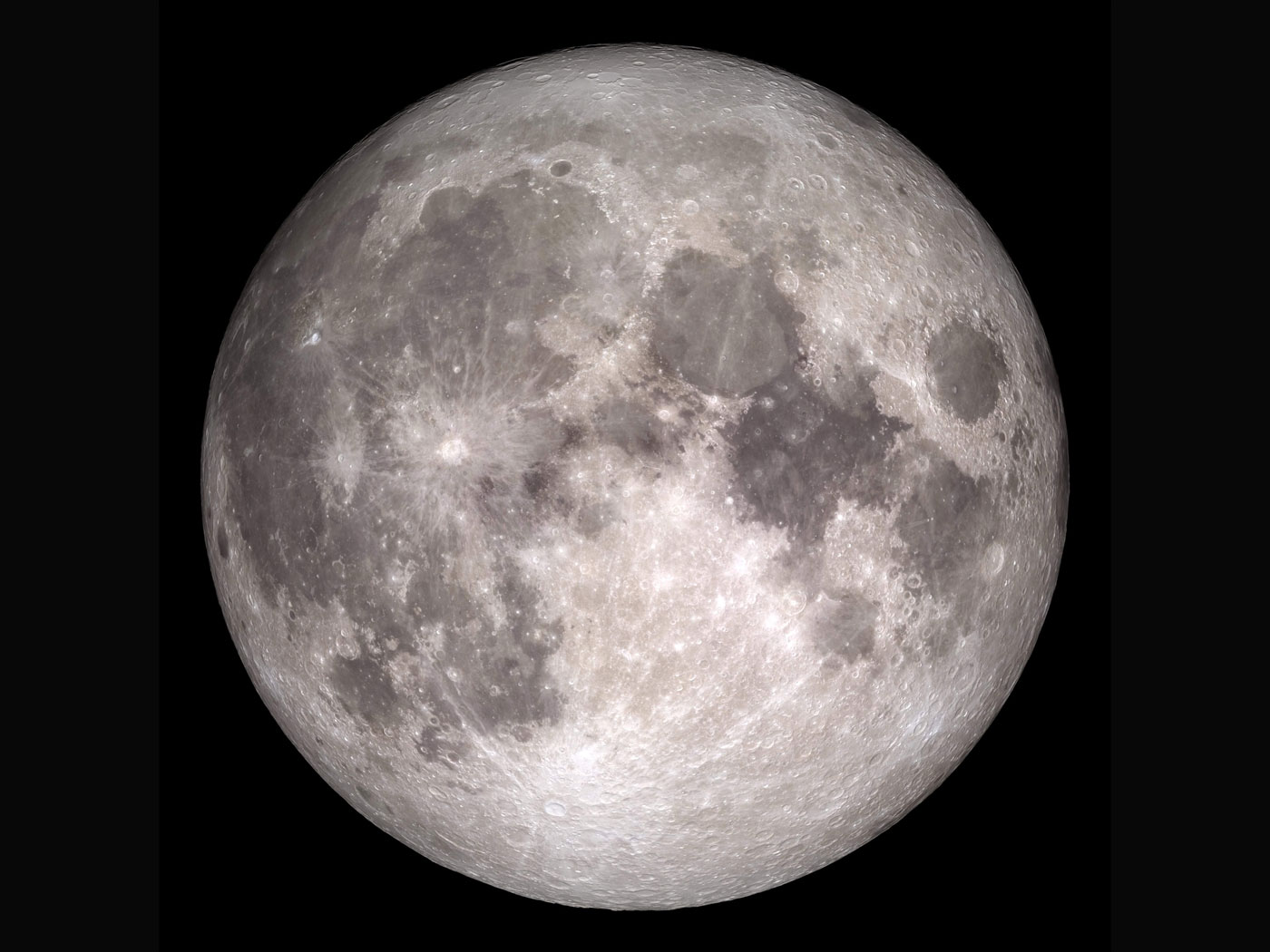Aside from appreciating the splendor of the sun during a beautiful sunrise or sunset, many rarely consider how special, necessary, and finely tuned our sun is to support life on Earth. Like the hub of a wheel, our sun plays an essential role in the activity of our solar system and Earth’s unique ability to support life. The sun exhibits an intricate design, a delicate balance, and displays the incredible intelligence of its Designer.
From our perspective on Earth, the sun may seem like a fixed source of light and heat in the sky. But our sun is quite dynamic, powering our solar system by continuously transmitting energy into space. The sun is the largest object in our solar system, with a diameter of about 865,000 miles, and its huge gravitational field holds the solar system together. Additionally, due to its massive size, the sun generates a magnetic field that extends into space and envelopes all the planets in our solar system.1,2
The sun’s interior is divided into several concentric regions. At the center is the core, the region in which a nuclear reaction occurs: the fusion of protons (the nuclei of hydrogen atoms) to become helium nuclei. This reaction releases a tremendous amount of energy. Unsurprisingly, the core is the hottest part of the sun. Temperatures there are estimated at 27 million °F.3
Surrounding the core is a rather massive region termed the radiative zone, in which heat from the core is radiated outward by bundles of light energy called photons.4 Enveloping the radiative zone is the convective zone, where transmission of heat and energy occurs via movement of plasma (hot ionized gas) creating convection cells, not unlike what occurs in a pot of hot water. The tops of these convection cells give a grainy appearance known as granulation to the surface of the next layer, the photosphere. This is the sun’s visible surface, a relatively cool 10,000 °F, from which its light and heat radiate into space.5
Directly outside the photosphere is the chromosphere, a reddish gaseous layer that, combined with the corona, constitutes the sun’s outer atmosphere. One of the sun’s most elusive mysteries is that the corona gets hotter the farther it extends from the photosphere, reaching up to 3.5 million °F—significantly hotter than the photosphere.6 The incredibly high temperature of the corona causes its particles to escape the sun’s gravity and form the solar winds, which travel beyond our solar system to create a giant bubble known as the heliosphere around the sun and its planets. The heliosphere acts as a giant shield protecting the planets from galactic cosmic radiation, which is highly energetic, penetrating, damaging radiation originating outside our solar system.7
For life to be possible on Earth, the sun must exhibit several key specific design features. For instance, it must emit a precise range of color. If the range were shifted more toward red or more toward blue, photosynthesis would be weaker and inefficient, and thus life could not be supported.8
Uniformitarian scientists maintain that the sun was much dimmer billions of years ago. That should have resulted in a frozen, uninhabitable earth, yet most evolutionists believe the earth was quite warm at that time. This “young faint sun paradox” is only a problem for those holding to deep time. It’s not a problem for the recent creation viewpoint, since one would not expect the sun’s brightness to change much in just 6,000 years. Interestingly, famous solar astronomer John Eddy once admitted that observational data of the sun do not demand an age of billions of years and that scientists could “live with” an age of just 6,000 years for the earth and sun.9
Lastly, Earth is near the inner edge of the circumstellar habitable zone. This is commonly referred to as the Goldilocks zone, the range of possible orbits around a star within which a planet can sustain on its surface the liquid water necessary to support life. A less massive sun would cause a narrowing of the Goldilocks zone, leading to an orbit range for Earth that is closer to the sun. This decrease in orbit range would increase tidal forces, resulting in an increase in deleterious natural phenomena such as flooding and tsunamis.10
These examples, and others beyond the scope of this article, strongly imply that our sun was designed with the purpose of supporting life on Earth. Given all the evidence, it’s easy to infer that our physical existence resulted from design, in contrast to inadvertent evolutionary causes. As science advances and unfolds the mysteries of the sun, scientists continue to discover how uniquely tailored our universe is for life. For “the heavens declare the glory of God; and the firmament shows His handiwork” (Psalm 19:1).
References
- Menzel, D. 1959. Our Sun. Cambridge, MA: Harvard University Press.
- For more on the magnetic activity of our sun, see Pennington, L. Our Calm Sun: Crazy Coincidence or Deliberate Design? Creation Science Update. Posted on ICR.org May 8, 2020.
- Phillips, K. 1992. Guide to the Sun. Cambridge, UK: Cambridge Press.
- Ibid.
- Ibid.
- Golub, L. J. and J. Pasachoff. 2002. Nearest Star: The Surprising Science of Our Sun. Cambridge, MA: Harvard University Press.
- Heliosphere. NASA Science. Posted on science.nasa.gov, accessed March 13, 2022.
- Bryant, D. A. and N. U. Frigaard. 2006. Prokaryotic photosynthesis and phototrophy illuminated. Trends in Microbiology. 14 (11): 488-496.
- Hebert, J. 2018. Our Young Solar System. Acts & Facts. 47 (9): 10-13.
- Sarfati, J. The Universe is Finely Tuned for Life. Creation Ministries International. Posted on creation.com 1997, updated 2020.
*Dr. Corrado earned a Ph.D. in Systems Engineering from Colorado State University and a Th.M. from Liberty University. He is a freelance contributor to ICR’s Creation Science Update, works in the nuclear industry, and is a senior officer in the U.S. Naval Reserve.
















